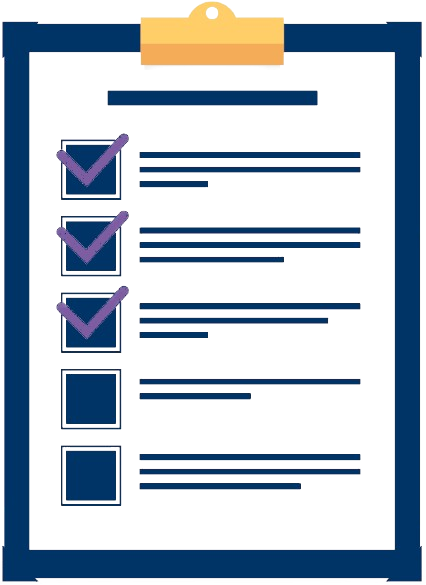Suggestions based on the Question and Answer that you are currently viewing
When might a shareholder have to rely on the “not essentially equivalent to a dividend” test in arguing that a stock redemption should be treated as an exchange for tax purposes?
In January 2015, Janeway Inc. doubled the amount of its outstanding stock by selling on the market an additional 10,000 shares to finance an expansion of the business. You propose that this information be shown by a footnote on the balance sheet as of December 31, 2014. The president objects, claiming that this sale took place after December 31, 2014, and therefore should not be shown. Explain your position.
Name the two basic mold types that distinguish casting processes.
Suppose that utilities are considered a fixed cost for a retail clothing outlet. Why might we expect a variance to occur for the cost of utilities?
What is the distinction between plastic sheet and film?
How might a balanced scorecard be used? (LO4)
How are restrictions of retained earnings reported?
Low carbon steel having a tensile strength of 300 MPa and a shear strength of 220 MPa is cut in a turning operation with a cutting speed of 3.0 m/s. The feed is 0.20 mm/rev and the depth of cut is 3.0 mm. The rake angle of the tool is 5° in the direction of chip flow. The resulting chip ratio is 0.45. Using the orthogonal model as an approximation of turning, determine (a) the shear plane angle, (b) shear force, (c) cutting force and feed force.
A tapered surface is to be turned on an automatic lathe. The workpiece is 750 mm long with minimum and maximum diameters of 100 mm and 200 mm at opposite ends. The automatic controls on the lathe permit the surface speed to be maintained at a constant value of 200 m/min by adjusting the rotational speed as a function of workpiece diameter. Feed = 0.25 mm/rev and depth of cut = 3.0 mm. The rough geometry of the piece has already been formed, and this operation will be the final cut. Determine (a) the time required to turn the taper and (b) the rotational speeds at the beginning and end of the cut.
During the month of June, Rowling Boutique had cash sales of $233,200 and credit sales of $153,700, both of which include the 6% sales tax that must be remitted to the state by July 15. Instructions Prepare the adjusting entry that should be recorded to fairly present the June 30 financial statements.
A NC drill press is to perform a series of through-hole drilling operations on a 1.75 in thick aluminum plate that is a component in a heat exchanger. Each hole is 3/4 in diameter. There are 100 holes in all, arranged in a 10 by 10 matrix pattern, and the distance between adjacent hole centers (along the square) = 1.5 in. The cutting speed = 300 ft/min, the penetration feed (z-direction) = 0.015 in/rev, and the traverse rate between holes (x-y plane) = 15.0 in/min. Assume that x-y moves are made at a distance of 0.50 in above the work surface, and that this distance must be included inthe penetration feed rate for each hole. Also, the rate at which the drill is retracted from each hole is twice the penetration feed rate. The drill has a point angle = 100°. Determine the time required from the beginning of the first hole to the completion of the last hole, assuming the most efficient drilling sequence will be used to accomplish the job
1. : Why do you think research has found that women receive less harsh feedback than men during performance reviews? How might that affect a woman’s career? Explain.
Will the envelope curve be tangential to the bottom of each of the short-run average cost curves? Explain why it should or should not be.
Indicate how well the percentage-of-sales method and the aging method accomplish the objectives of the allowance method of accounting for bad debts.
: Describe the leadership trends emerging in today’s organizations, including Level 5 leadership, servant leadership, authentic leadership, and interactive leadership.
Ethical Decision-Making — Wasted Soup83 While she was watching operations at a food processing plant, a consultant noticed a large amount of soup on the floor under a filling machine. An operator washed this soup away each day. When asked about the loss of soup, the production manager replied that no losses occurred. In this manager’s view, no problem existed because the production line operating costs were below budgeted costs. Later, a productivity team analysed the amount of soup wasted over a given time period. The team estimated the cost of the leak to be $750 000 a year. To correct the problem, the company installed a set of valves costing $50 000. The new valves eliminated the loss of soup. Instead of measuring performance against expected budget levels, managers could compare actual profits to ideal profits that could be earned if operations were to run at their true potential. By focusing on the gap between ideal and actual profits, managers are encouraged to identify lost profit potential and to reconsider critical processes. Once gaps are identified, managers rank them according to their value to the organisation and correct them in priority order. Required (a) Is it an ethical problem when employees observe inefficiencies in the workplace, such as the loss of soup in this case? Why? (b) Why is it common for employees to do nothing when they observe inefficiencies? Compare the responsibility of operation workers to the responsibility of the operating manager with respect to identifying and correcting inefficiencies. In what ways are the responsibilities the same? In what ways are they different? (c) Is it ethical for employees to ignore inefficiencies? Why? What values did you use to arrive at the conclusion? (d) People do not always seek to achieve their best performance. For example, students sometimes apply minimum effort to achieve a targeted grade. What does it mean for individuals to seek continuous improvement? (LO2)
Is it easier to describe what a capital asset is or what it is not? Explain.
How do people’s expectations influence the extent of crowding out?
What are the implications of Regulation FD? (LO4)
How do two taxpayers determine who has priority to claim the dependency exemption for a qualifying child of both taxpayers when neither taxpayer is a parent of the child (assume the child does not qualify as a qualifying child for either parent)?How do parents determine who gets to deduct the dependency exemption for a qualifying child of both parents when the parents are divorced or file separate returns
Will organisational efforts towards sustainability result in reduced organisational profits?
How does a money market deposit account differ from other sources of funds for banks? (LO2)
Presentations What is the purpose of the economic presentations made during a FOMC meeting? (LO2)
Indicate whether the following statements about the conceptual framework are true or false. If false, provide a brief explanation supporting your position. (a) Accounting rule-making that relies on a body of concepts will result in useful and consistent pronouncements. (b) General-purpose financial reports are most useful to company insiders in making strategic business decisions. (c) Accounting standards based on individual conceptual frameworks generally will result in consistent and comparable accounting reports. (d) Capital providers are the only users who benefit from general-purpose financial reporting. (e) Accounting reports should be developed so that users without knowledge of economics and business can become informed about the financial results of a company. (f) The objective of financial reporting is the foundation from which the other aspects of the framework logically result.
Suppose transfer prices are set at market prices and a manager who previously purchased internally begins to purchase externally. Explain what it means to say that the outsourcing decision might have been suboptimal.
The benefits of buying with AnswerDone:

Access to High-Quality Documents
Our platform features a wide range of meticulously curated documents, from solved assignments and research papers to detailed study guides. Each document is reviewed to ensure it meets our high standards, giving you access to reliable and high-quality resources.

Easy and Secure Transactions
We prioritize your security. Our platform uses advanced encryption technology to protect your personal and financial information. Buying with AnswerDone means you can make transactions with confidence, knowing that your data is secure

Instant Access
Once you make a purchase, you’ll have immediate access to your documents. No waiting periods or delays—just instant delivery of the resources you need to succeed.
